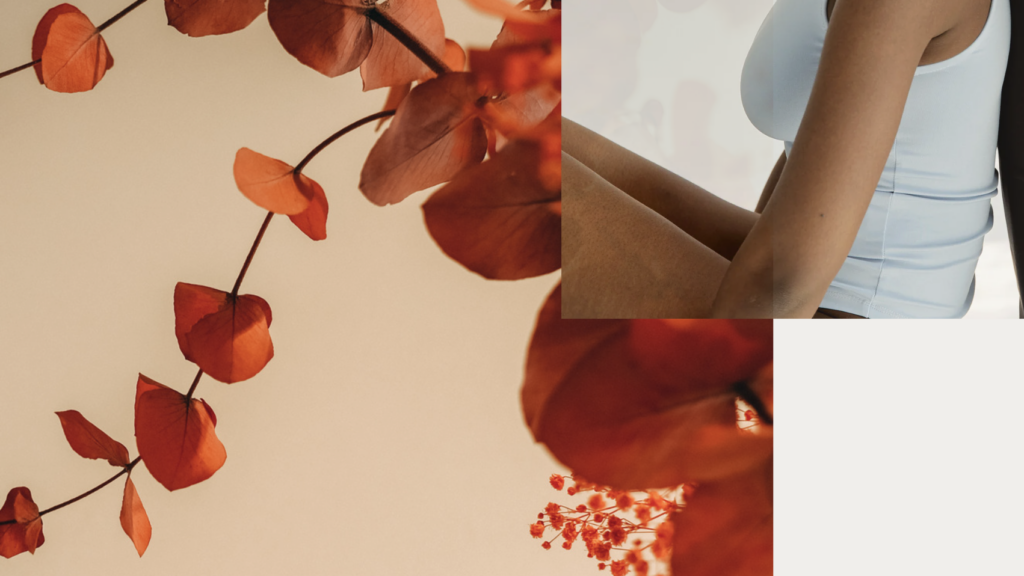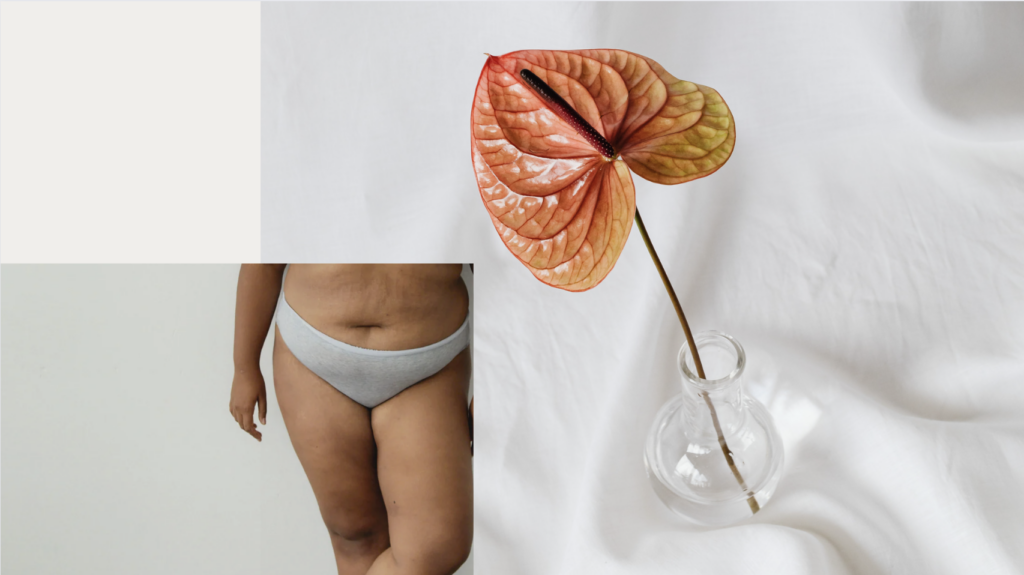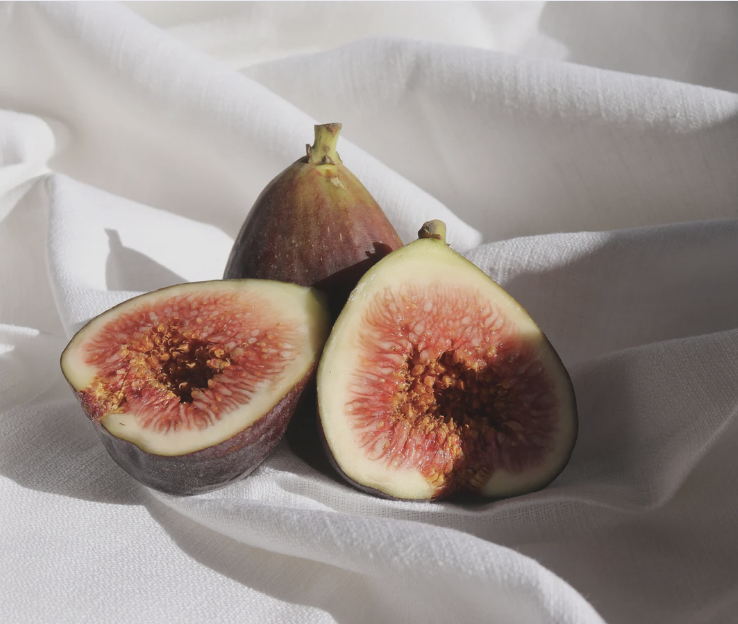Periods are a natural part of being a woman. They are an incredible marker of the body’s state of health and can provide a great deal of information on other processes in the body. And yet, as women, we are often taught to feel ashamed, embarrassed, or even dirty around that “time of the month.”
Outside of some information we received in 9th grade biology class, most of our period understanding comes from personal experience, whispers between friends, and media portrayals. But overwhelmingly, the depiction and societal consensus of a woman on her period is someone who is irrational, weepy, moody, & ice-cream loving. This characterization is not only disempowering, but worsens our general disconnect from and discomfort around our cycle.
We are told that PMS symptoms, painful cramps and mood swings are just a part of the womanhood package – but this detachment to and misunderstanding of our cycle can actually worsen fertility struggles, exacerbate PCOS and women’s health issues, and lead to very real pain every. dang. month. So what can we do?
When we learn to LISTEN to our inner cycle, we are actually given a whole new set of information around our health. In fact, the menstrual cycle is so indicative of health that many healthcare organizations now consider a woman’s period as a major vital sign, along with blood pressure, pulse, temperature, and respiration. In other words, the period can help us better understand our health and how to best utilize our mental and physical energy depending on where we are in our cycle.
The ebb and flows of reproductive hormones influence not just our mood, but our energy levels, appetite and cravings, digestion, desires, and social limits. When we learn how to tune in and respect the messages that our body is telling us, we can act in a way that honors each distinct phase of our cycle, leading to more ease, greater body awareness, and better health.
The Four Phases:
The female cycle is broken up into a few phases. To keep things simple, we will look at them in 4 different stages:
- The Menstrual Phase: marks the start of your cycle and lasts until the last day of your period
- The Follicular Phase: considered the first half of your cycle, and for most women will last until day 14-16 ( we’ll discuss it in the context of post-period here)
- The Ovulatory Phase: when you’re a fertile myrtle
- The Luteal Phase: the second half of your cycle, and lasts until days 28-35 for most women. This is when many women feel those PMS symptoms.
If you’re ready to take back control of your period, and learn how to flow with the natural rhythms of being a woman, you’ve come to the right place.
The Menstrual Phase:

During your period, there is a dramatic decrease in hormones – estrogen and progesterone plummet and will reach their lowest level. This drop in hormones are what bring about potential menstrual cramps and pain, along with the notorious mood swings. However, with the right lifestyle measures, it does not need to be so volatile.
We can work with the low hormone context instead of pushing up against it. You can use this time to relax, focus on self-care, and (literally) just go with the flow. During this time, some women may also feel a surge of creativity and a strong intuition, so if this is you, use this time to invest in any creative low-stress projects you’ve been considering, whether it’s arts and crafts or creating music. Some women may actually feel a surge in energy during their period, so listening to your body is best. Bring in practices that feel nourishing and that support you, your body, and your headspace.
| DAYS OF CYCLE | 1-7 (beginning to end of period) |
| HORMONE RECAP | estrogen and progesterone are at a low |
| ENERGY | may feel introverted, depleted, intuitive or creative |
| FOOD | load up on iron-rich foods and soothing teas |
| MOVEMENT | gentle movement |
| RELATIONSHIPS | look inward and surround yourself with loved ones |
Hormone recap: Estrogen and progesterone are at an all time low.
Food: Avoid high fat or processed foods, alcohol and caffeine, all of which can exacerbate symptoms during your period. Focus on iron rich foods to replenish the lost iron in your period
- high quality lean proteins (including organic tofu, legumes, AWA eggs, wild fish, etc.)
- high iron foods like animal protein, leafy greens, dried apricots, lentils
- pumpkins
- flaxseeds
- chocolate for the soul
If you’re experiencing cramps, choose soothing teas, like homemade ginger tea or chamomile. During this time, our body can also better utilize carbohydrates, so feel free to enjoy a more carb-rich diet, such as whole grains, potatoes, corn, etc.
Movement: While it can feel difficult to get moving during your period, some light exercise can actually help relieve period cramps and pains. Go for a brisk walk, some light pilates, or a yin like yoga. Since during this time our body is better able metabolize carbs, you are actually able to build lean muscle mass easily during this time. If you are feeling up to it, you may consider bringing in some light strength training.
Relationships: This may be the time to say no. No to the big social outings or that party you’re sort of dreading – focus on easy engagements and surround yourself with other supportive women. If you feel comfortable engaging in sexual activity, go for it. But if not, honor that feeling and connect with your partner in other ways.
Follicular Phase:

The follicular phase is often viewed as the “easiest” time in a woman’s cycle. As your period comes to an end, hormones, like estrogen and testosterone, rise and so does your energy and confidence. You may notice sharpened focus and better decision making skills as well. This is the time to socialize, dive into work and projects, and bring in more activity and exercise. Embrace this time of motivation and optimism by taking risks and, well, just going for it.
| DAYS OF CYCLE | 7-14 (end of period to ovulation) |
| HORMONE RECAP | FSH and estrogen are on the rise |
| ENERGY | energetic, optimistic, confident, flourishing |
| FOOD | continue with iron-rich foods, focus on complex carbs and veggies, bring in cruciferous veggies |
| MOVEMENT | cardio based workouts with strength training |
| RELATIONSHIPS | socialize with new friends, old friends, good friends and best friends |
Hormone recap: FSH and estrogen are on the rise.
Food: Continue focusing on iron-rich foods to help replenish your body after your period. You may want to consider bringing in estrogen metabolizing foods to help keep levels regulated, like cruciferous veggies. Generally speaking, you may also notice during this time that your appetite and cravings are low and that you are better able to handle carbs, so consider
- fresh, vibrant and light foods
- go for those whole grains, like oats and brown rice
- bring in cruciferous veggies (broccoli, cabbage, kale)
- work in an array of fruit and vegetables
Movement: Pair cardio based workouts with strength training. Running, biking, swimming, hot yoga with some extra squats or ankle weights will all serve you during this stage. However, also note that your risk of injury *may* be higher during this time. Some evidence suggests that estrogen increases the elasticity of our joints, tendons and ligaments, which make us more prone to an injury. So be a little mindful if you’re training for a marathon or pushing your workouts, and try to get in some extra collagen and vitamin C for extra production.
Relationship: Be social! Connect with your girlfriends, go dancing, and plan a date night.
Ovulation:

Ovulation is the process in which a mature egg is released from the ovary. It marks the beginning of the luteal phase, as well as the possibility of pregnancy! Estrogen, testosterone and LH have peaked, compounding the impacts of the follicular phase. Your libido and energy are soaring, and your skin might even look clearer – your body’s way of boosting confidence and encouraging you to reproduce. If you’re trying to conceive, this is your time. If not, take this time to connect with your partner, but also friends and family as you may be feeling extra social. The ovulatory hormones are powerful and may also increase your innovation and willpower.
| DAYS OF CYCLE | 14-18 (or whenever you ovulate) |
| HORMONE RECAP | estrogen, FSH and LH have all peaked |
| ENERGY | Sensual, alluring, clever, lush |
| FOOD | veggies and omega-3 rich foods |
| MOVEMENT | group workouts |
| RELATIONSHIPS | date night or dance party with friends |
Hormone recap: Estrogen and LH have peaked. Progesterone is beginning to rev up.
Food: Appetite is low and can be satisfied with lighter meals, so continue with those fresh fruits and veggies. Choose low inflammation foods to prepare for the next phase and support your hormones, like wild fatty fish, whole fruits and vegetables, nuts and seeds.
Movement: That extra energy and desire to socialize makes this a great time for group workouts. Run with a friend, try a group fitness class, go for those HITT classes (looking at you Barry’s) or join an online workout community
Relationship: Lean into your sensuality – it’s the perfect time for a romantic date night. Not dating right now? Take the time to socialize and plan a fun GNO.
Luteal Phase

The luteal phase, especially the second half, is marked by low energy and mood. It tends to be the time when women face PMS related symptoms. But with the right foundation, we can learn to honor our bodies, alleviate symptoms, and make the most of this time. Be compassionate with yourself, listen to your feelings, care for your body, and create space for yourself. This is your time to invest in your self care and look inward – journal, meditate, go on solo walks and spend time in introspection.
| DAYS OF CYCLE | 18 – 28 (from ovulation to period) |
| HORMONE RECAP | dominated by progesterone, and ends with fall of progesterone and estrogen |
| ENERGY | lower energy, peaceful, introspective, sensitive |
| FOOD | focus on omega-3 and healthy fats along with lean protein |
| MOVEMENT | light-to-moderate exercise |
| RELATIONSHIPS | listen to yourself – don’t be afraid to say no |
Hormone recap: it’s a rollercoaster baby. Progesterone rises in the first half, along with a mini second wave of estrogen. By the second half (assuming no pregnancy) your hormones will drop.
Food: At the beginning of this phase, the increased progesterone can cause slow GI motility, causing constipation and bloating. But energy and protein needs are higher during this time, we’re more primed for fat utilization, and so we may also be feeling hungrier – so go for
- avocado
- nuts
- seeds
- fatty fish
- high quality pasture raised eggs
Pair these foods with veggies and a bit of high fiber, slow burning carbohydrates (oats, sweet potatoes, spelt, quinoa) to keep moving things along.
In the second half of this phase, the dip in hormones can cause water retention and bloating, so you may want to avoid those processed foods and instead choose potassium rich produce (like bananas and sweet potatoes) along with high quality sodium sources, like celtic sea salt. To keep cramps at bay, choose omega-3 rich foods, like salmon and avocado. Low serotonin levels can also lead to increased cravings, so enjoy a healthy indulgence like some dark chocolate.
Movement: As your hormones drop and energy is lower, light-to-moderate exercise is best, like pilates, yoga, or softer strength training. VO2 max, our oxygen consumption, may also drop slightly during this time, meaning that aerobic exercise may be harder.
Relationships: Your libido may be down, so if so, just take things slowly. The lower estrogen can impact women in different ways. This is the time to invest in your relationship with yourself.
A Final Note:
At the end of the day, learning to tune in and listen to our bodies and sync our behaviors accordingly is an extremely personal and individualized process. You know your body best – so if you are feeling something that is not represented in this text, go with that.
Need some more guidance? Schedule a 1:1 discovery call to discuss how we can best support you.
Written By: Amanda Wahlstedt, RDN

share this post >>
share this post >>